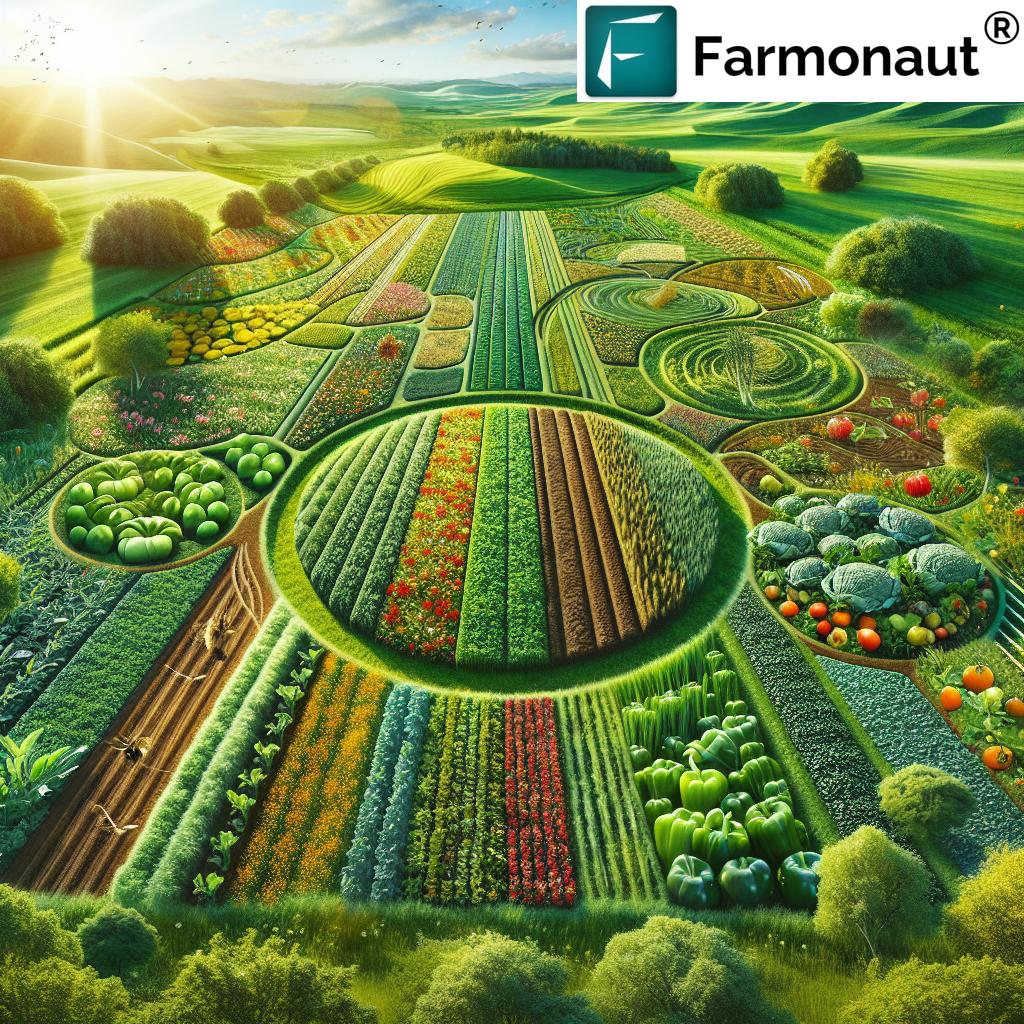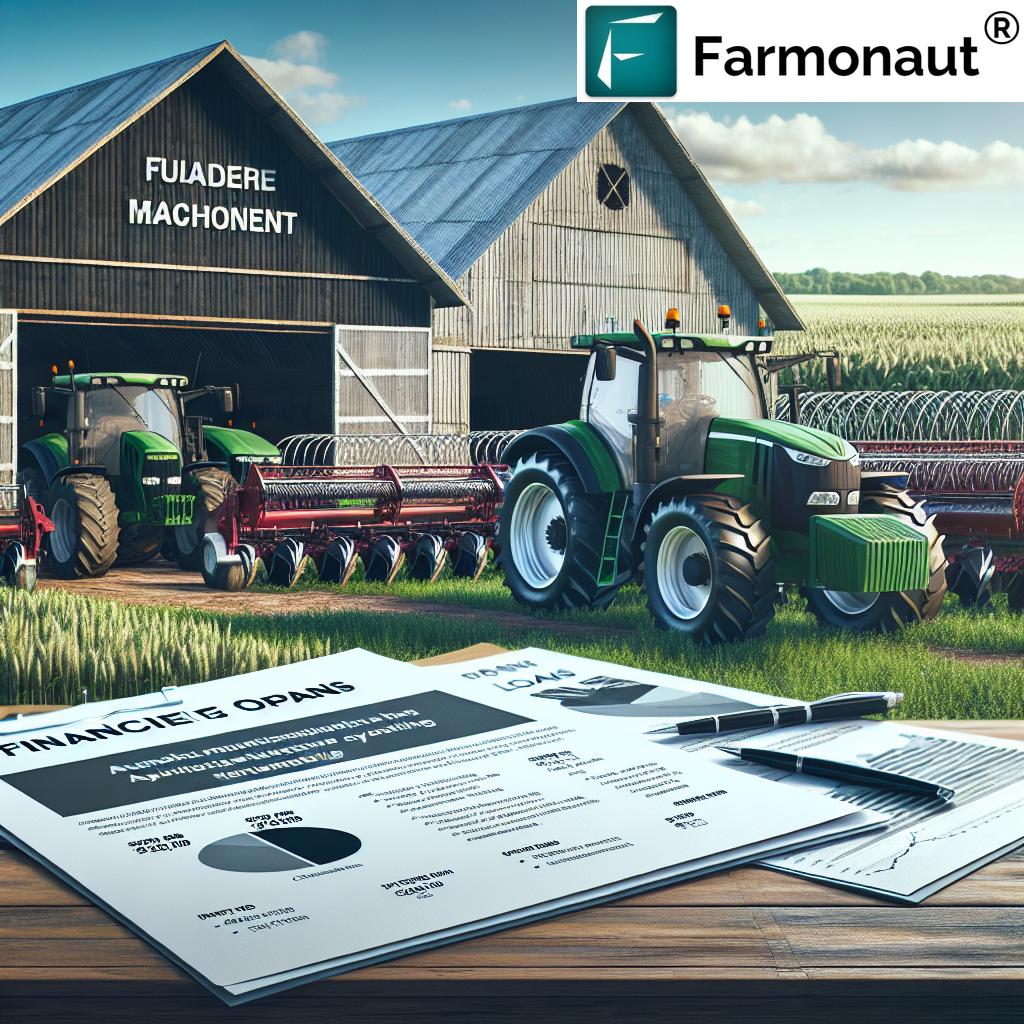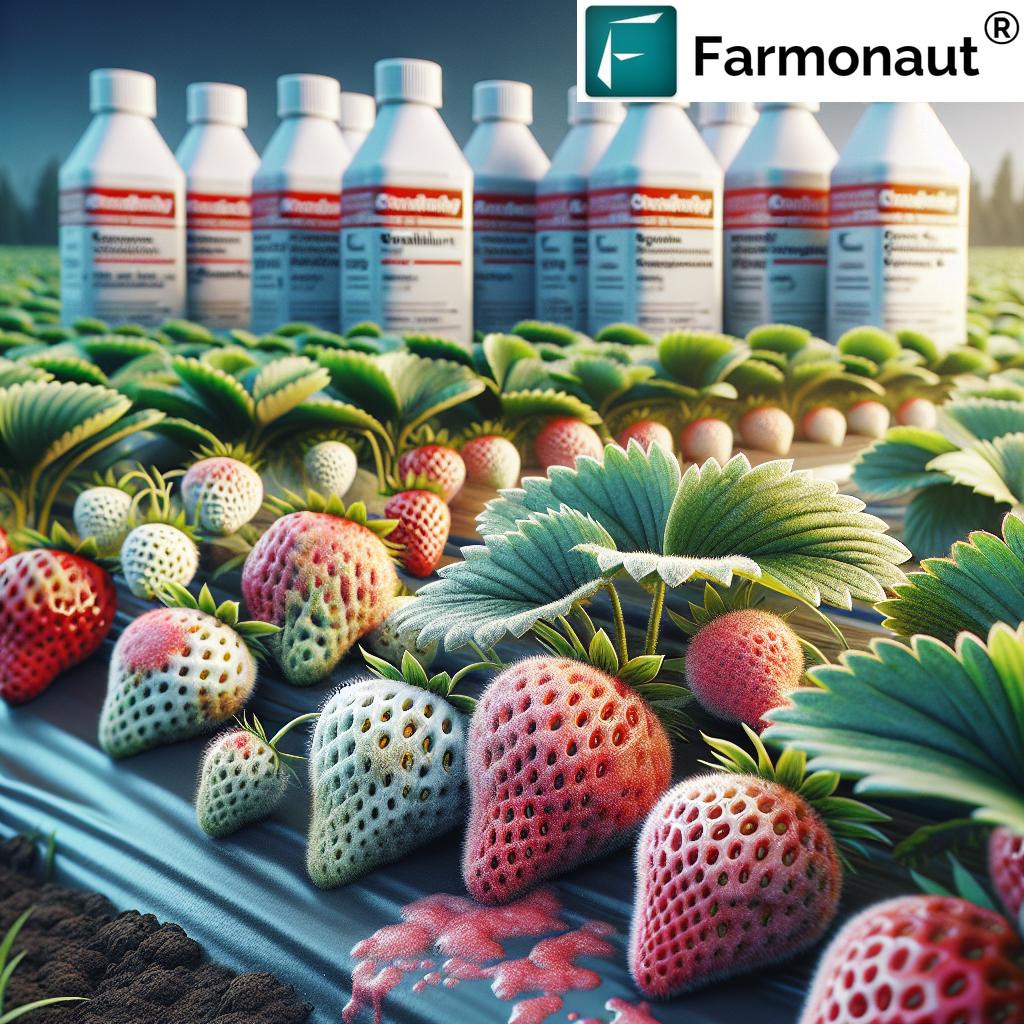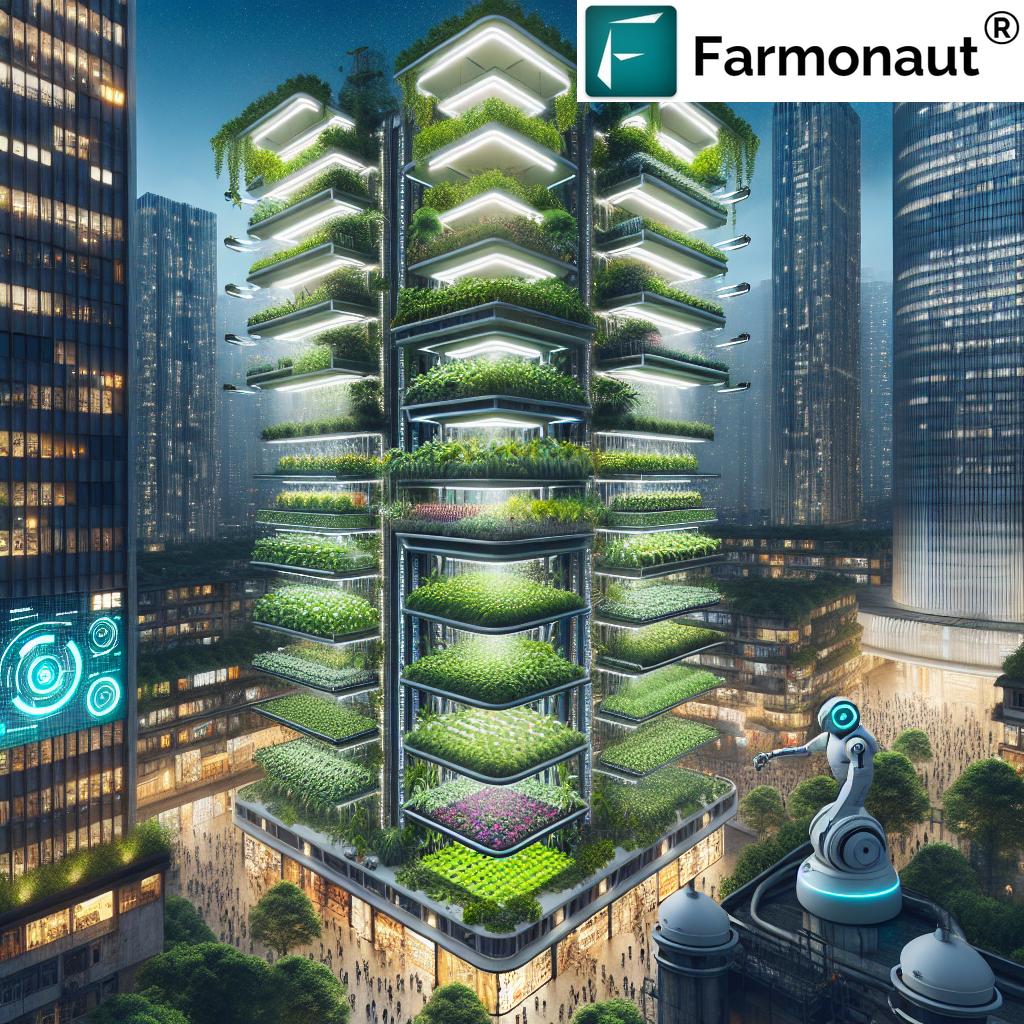What Is Sustainable Farming? 7 Shocking Secrets Revealed
“Over 30% of global greenhouse gas emissions come from agriculture, making sustainable farming crucial for climate change mitigation.”
- Introduction: Defining Sustainable Farming
- The Three Pillars of Sustainable Agriculture
- 7 Shocking Secrets of Sustainable Farming
- Environmental Benefits of Sustainable Farming Practices
- Economic Benefits: Profitability & Resilience
- Social & Community Impact
- Core Sustainable Farming Practices
- Farmonaut: Technology Empowering Sustainability
- Conventional vs. Sustainable Farming Practices (Table)
- Challenges, Barriers, and Key Considerations
- Frequently Asked Questions
- Conclusion: Securing Our Future Generations
Introduction: Defining Sustainable Farming
Sustainable farming—also known as sustainable agriculture—is a holistic approach that harmonizes environmental preservation, economic profitability, and social equity. It ensures that we meet our current needs for food and textiles without compromising our children’s ability to meet theirs.
As the world’s soil depletes, water resources dwindle, and the threat of climate change rises, it’s crucial that we adopt responsible farming practices. These methods promote soil conservation, minimize erosion, conserve water, strengthen rural economies, and support the resilience of our agricultural systems for future generations.
This guide will reveal seven shocking secrets about sustainable agriculture—unveiling the methods, hidden benefits, and solutions needed for a more resilient and equitable world.

The Three Pillars of Sustainable Agriculture
At the heart of all sustainable agriculture are three pillars:
- Environmental Health: Preserving natural resources through eco-friendly techniques like cover cropping, efficient irrigation, organic farming, and minimizing chemical pesticides.
- Economic Profitability: Reducing costs, increasing market access, and stabilizing farmers’ incomes by maximizing resource use and entering value-driven markets.
- Social Equity: Supporting healthy rural communities, promoting safe food, and ensuring fair labor standards while preserving cultural tradition and empowering future generations.
7 Shocking Secrets of Sustainable Farming
The transition toward sustainable farming practices might surprise many by how transformative and vital they are for both the planet and ourselves. Let’s uncover these secrets:
- Healthy Soil Is More Valuable Than Gold
The fertility and structure of soil underpin our entire food system. Sustainable soil conservation methods like no-till farming, cover cropping with clover or rye, crop rotation, and minimizing erosion result in greater nutrient retention, enhanced biodiversity, and higher resilience to climate change.
- Water Conservation in Agriculture Can Halve Water Usage
Sustainable farming practices utilize efficient irrigation methods such as drip irrigation and rainwater harvesting, reducing waste and providing adequate moisture to crops—critical for regions facing water scarcity.
“Sustainable farming can reduce water usage by up to 50% compared to conventional methods, preserving vital freshwater resources.”
- Agroforestry Sequesters Massive Carbon, Supporting Climate Change Mitigation
Integrating trees and shrubs with cropping systems (agroforestry) improves water retention, reduces soil erosion, increases biodiversity, and captures carbon, drastically reducing greenhouse gas emissions. Read more about agroforestry benefits.
- Reducing Chemical Input Promotes Resilient Crops and Healthier Communities
By minimizing fertilizers and pesticides, sustainable agriculture protects beneficial insects, birds, and wildlife, ensuring ecosystem health and safer food. We reduce chemical input using integrated pest management—a mix of biological, cultural, and mechanical methods instead of chemicals.
- Crop Rotation and Polyculture Strengthen Resilience
Growing a diversity of crops through crop rotation and polyculture keeps soil nutrients balanced, prevents pest infestations, and mimics natural systems, leading to greater resilience and sustainability.
- Economic Benefits of Sustainable Farming Far Surpass Traditional Models
Sustainable agriculture means reduced costs for inputs, expanded market opportunities as demand grows for organic and sustainably produced food, and greater business resilience through income diversification.
- Farmers Can Access Real-time Data to Optimize Sustainability
Modern agricultural technology such as Farmonaut offers satellite-based insights, AI-driven advisories, and blockchain traceability, helping farmers make data-driven decisions to conserve resources, increase yields, and minimize environmental impact.

Environmental Benefits of Sustainable Farming Practices
Adopting sustainable farming creates measurable, long-lasting environmental gains:
- Soil Conservation Methods
- No-till and cover cropping (reference) prevent soil erosion, protect soil structure, and promote fertility.
- Cover crops like clover and rye are planted in off seasons. These maintain soil health by replenishing nutrients and keeping erosion at bay. They also suppress weeds and improve water retention.
- Water Conservation in Agriculture
- Drip irrigation minimizes waste and ensures adequate moisture supply—all vital for arid regions facing scarcity.
- Rainwater harvesting stores precious rainfall, so farmers are less dependent on unpredictable seasons.
- Biodiversity Preservation
- Reducing chemical inputs like fertilizers and pesticides protects the survival of beneficial insects, birds, and wildlife.
- Agroforestry benefits: Integrating trees and shrubs fosters diverse habitats, enables carbon sequestration in vegetation, and stabilizes soils.
- Climate Change Mitigation in Agriculture
- Practices like agroforestry, cover cropping, and no-till farming help sequester carbon in soils and plant matter, actively reducing greenhouse gas emissions.
Implementing these methods supports the long-term health of our earth and future agricultural productivity.
Economic Benefits: Profitability & Resilience
Shifting to sustainable agriculture bolsters the farm’s bottom line in several important ways:
- Lower Input Costs
- Using nature-based solutions for fertility and pest management minimizes fertilizer and pesticide purchases, reducing operational costs.
- Efficient resource management tools (e.g., moisture tracking, advisory systems) cut waste and input needs. With Farmonaut’s carbon footprinting service, businesses can also track and reduce carbon emissions, potentially earning green market incentives and compliance benefits.
- Market Opportunities
- Growing demand for organic farming techniques and local produce supports premium pricing and broader market access.
- Blockchain traceability (as offered in Farmonaut’s product traceability solution) can assure consumers and retailers of a food product’s origins, improving value and reputation.
- Diversified Income Streams
- Agro-tourism, direct sales, and value-added processing (jams, cheeses, fibers, etc.) enable resilience despite market shocks or environmental stress.
- Farmers can leverage modern solutions like Farmonaut’s crop loan and insurance validation tools—empowering better access to finance and risk management options.
Social & Community Impact
Sustainable agriculture reaches beyond the farm gate:
- Community Health
- Minimizing pesticide and chemical use reduces residues on food, improves farm worker safety, and protects local water from pollution.
- Cultural Preservation
- Supporting time-honored, locale-specific farming techniques maintains rural identity and food culture.
- Rural Development
- Stimulates regional economies by creating jobs in organic farming, local food processing, and modern fleet/resource management for larger agribusinesses.
Core Sustainable Farming Practices
Core sustainable farming practices can be grouped as follows:
-
Crop Rotation and Polyculture
- Diversity of crops boosts resilience, mimics natural systems, improves nutrient cycling, and disrupts pest/disease cycles. Alternating between cereals, legumes, and cover crops restores soil health and reduces reliance on chemical inputs. Learn more about crop rotation and polyculture.
-
Cover Cropping
- Crops like clover and rye are grown off-season. They protect soil from erosion, replenish nutrients, and improve water infiltration and retention.
-
Integrated Pest Management
- Keeps pest pressure at bay by integrating biological control (introducing natural predators), cultural practices (crop rotation, resistant varieties), and mechanical methods (reference), minimizing pesticide use.
-
Agroforestry
- Includes the strategic combination of trees and shrubs with crops or livestock. Provides climate and soil benefits, boosts farm biodiversity, and enhances carbon sequestration.
-
Conservation Tillage
- No-till and minimum tillage “disturb” the soil far less, preserving natural structure, boosting moisture retention, and reducing erosion. Seeds are planted directly into undisturbed soil residue.
-
Water Conservation Practices
- Adopting efficient watering schedules and investing in drip irrigation technology ensures crops receive just enough water, reducing waste and combatting water scarcity.
- Rainwater harvesting systems supplement irrigation, especially in regions with unpredictable rainfall patterns.
Embracing these sustainable farming practices is not just wise—it’s essential for long-term soil and food security.
Use Farmonaut’s platforms on web, Android, or iOS to access state-of-the-art crop health monitoring, AI-advisory, satellite-driven insights, and more!
Farmonaut: Technology Empowering Sustainability
Modern sustainable agriculture thrives at the intersection of tradition and technology. That’s where Farmonaut powers the next generation of sustainability in farming:
- Satellite-Based Crop Health Monitoring
- We provide farmers with data-rich NDVI imagery, soil moisture analysis, and in-field health alerts to optimize irrigation, fertilizer use, and detect pest/disease risks swiftly. This leads to resource conservation and higher yields, significantly reducing waste.
- AI-Driven Advisory (Jeevn AI)
- Real-time, personalized advisory—combining weather, soil, and satellite feeds—delivers actionable guidance, maximizing efficiency and sustainability in every decision.
- Blockchain-Based Traceability
- Ensures full transparency of every product journey, from the field to consumer in the food and textile industries (Traceability solutions), building trust and compliance in global markets.
- Carbon Footprinting
- Estimate, track, and mitigate agricultural emissions—a must for businesses seeking green certifications, and anyone eager to reduce climate impact (Read more).
- Fleet and Resource Management
- Monitor, track, and optimize vehicle and field resources for cost savings, improved efficiency, and reduced environmental footprint (See details).
With flexible pricing, Farmonaut makes high-end, precision agriculture accessible to small and large farms—enabling everyone to contribute to a sustainable future.
Want to manage plantations or forests at scale? Check out Farmonaut Large Scale Farm Management Solutions.
Conventional vs. Sustainable Farming Practices
| Practice/Aspect | Conventional Farming (Estimated Values) | Sustainable Farming (Estimated Values) |
|---|---|---|
| Soil Health | Degrades over time; erosion rates up to 10–20 tons/ha/year* | Stable or improved; erosion reduced to <2 tons/ha/year* |
| Water Use | 10,000–15,000 m³/ha/year* | 5,000–7,000 m³/ha/year* (up to 50% reduction) |
| Chemical Input | High use: 200+ kg/ha/year fertilizer & extensive pesticide use* | Reduction up to 80%; minimal or organic inputs |
| Carbon Emissions | Up to 3.7 tonnes CO₂-equivalent/ha/year* | Reduced by 30–70% with sequestration in soils & biomass |
| Crop Yield Stability | Can fluctuate; vulnerability to pests & weather extremes | More stable; resilient through diversity, rotation, cover crops |
| Biodiversity Impact | Decline of pollinators & wildlife due to monoculture & chemicals | Boosts biodiversity; more insects, birds, wildlife with habitat provision |
Challenges, Barriers, and Key Considerations
Despite overwhelming benefits, implementing sustainable farming practices isn’t without challenges:
- Transition Period: Expect an adaptation phase—possible short-term yield dips and greater labor needs as new patterns are learned and infrastructure is modified.
- Education and Knowledge: A real and pressing need for training and ongoing learning, as sustainable methods differ significantly from conventional ones (learn more).
- Market Access: Not all local or regional markets are set up to reward sustainable products or provide necessary certification and price premiums yet.
- Policy and Incentives: Advocacy and engagement are often needed to create supportive policies, credit access, and research for sustainable agriculture scaling.
- Rural Infrastructure: Reliable access to technology, advisory services, satellite-data platforms, and farmer cooperatives must be improved in many areas.
The role of platforms like Farmonaut, which democratize access to real-time data, resource management, and supply-chain transparency, cannot be overstated—especially for smallholder and medium-scale operations worldwide.
Frequently Asked Questions
What is sustainable farming in simple words?
Sustainable farming is an agricultural approach that meets today’s food needs without harming the environment or depleting resources—so future generations can also thrive. It balances economic, environmental, and social responsibilities to keep agriculture healthy in the long run.
What are the most important sustainable farming practices?
Key practices include crop rotation and polyculture, cover cropping (e.g., clover, rye), agroforestry, integrated pest management, conservation/no-till farming, and efficient water conservation in agriculture using drip irrigation and rainwater harvesting.
How does sustainable farming help climate change mitigation?
It helps mitigate climate change by sequestering carbon in soils and trees, reducing greenhouse gas emissions through lower chemical and fuel use, and making farms more resilient to climate extremes.
Is sustainable agriculture more profitable?
Often yes, because input costs are minimized, crops are more resilient to stress, and there is growing demand (and premiums) in the market for organic and traceable food and textiles. Platforms like Farmonaut help optimize profitability further through real-time insights and smart resource allocation.
How does Farmonaut support sustainable farming?
Farmonaut leverages satellite imagery, AI-based advisory, and blockchain-powered traceability to help farmers optimize input use, monitor crop and soil health, track moisture and carbon footprint, and integrate sustainable methods. These advanced, affordable tools empower decision-making for farms of any size.
How can I get started with Farmonaut?
You can sign up for Farmonaut’s web, Android, or iOS app to access real-time crop monitoring, AI advisories, and much more. If you’re a business or developer, explore our satellite API for custom integrations.
Conclusion: Securing Our Future Generations
Sustainable farming practices are not just a trend—they are our best path toward resilient, equitable, and environmentally safe agriculture for centuries to come.
By implementing soil conservation, water-saving irrigation, agroforestry, and community-centric approaches, we preserve resources for future generations, ensure food security, reduce carbon emissions, and promote a balanced relationship between human needs and nature.
With the support of cutting-edge platforms like Farmonaut, every farmer, agribusiness, or policymaker can access the knowledge, data, and digital tools to make sustainable agriculture a reality—enhancing both our present and our legacy for those who follow.
Let’s nurture the earth, empower farmers, and build a food system that sustains us all—today and tomorrow.









